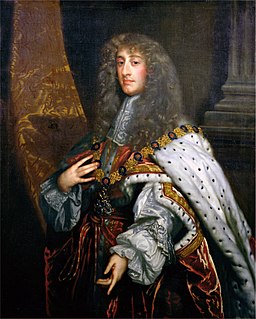
Marquess of Sligo is a title in the Peerage of Ireland. It was created in 1800 for John Browne, 3rd Earl of Altamont. The Marquess holds the subsidiary titles of Baron Mount Eagle, of Westport in the County of Mayo, Viscount Westport, of Westport in the County of Mayo, Earl of Altamont, in the County of Mayo, Earl of Clanricarde and Baron Monteagle, of Westport in the County of Mayo. All these titles are in the Peerage of Ireland, except the Barony of Monteagle, which is in the Peerage of the United Kingdom. The latter peerage entitled the Marquesses to a seat in the House of Lords prior to the House of Lords Act 1999. The Earldom of Clanricarde was inherited by the sixth Marquess in 1916 according to a special remainder in the letters patent.

Baron Kilmaine is a title that has been created twice, both times in the Peerage of Ireland. The first creation came in 1722 in favour of the soldier the Hon. James O'Hara. Two years later he succeeded his father as Baron Tyrawley. However, both titles became extinct on the second Baron Tyrawley's death in 1773 without legitimate sons.
This is a list of people who served as Lord Lieutenant of County Donegal.
This is a list of people who served as Lord Lieutenant of County Roscommon.
This is a list of people who have served as Lord Lieutenant of Queen's County.
This is a list of people who have served as Lord-Lieutenant of Wexford.
This is a list of people who have served as Lord-Lieutenant of Longford.
This is a list of people who have served as Lord-Lieutenant of County Cork.
This is a list of people who have served as the Lord Lieutenant of Kilkenny.

This is a list of lords lieutenants of County Down.
This is a list of people who have served as Lord Lieutenant of Sligo.
James Cuffe, 1st Baron Tyrawley was an Irish peer and politician.
Baron Tyrawley was a title that was created twice, both times in the Peerage of Ireland. The first creation came in 1706 in favour of the soldier Sir Charles O'Hara. His son, James O'Hara, was a distinguished military commander. He had already been created Baron Kilmaine in the Peerage of Ireland in 1722 when he succeeded his father in the barony of Tyrawley two years later. However, both titles became extinct on his death in 1774. The next creation came in 1797 in favour of James Cuffe, who was created Baron Tyrawley, of Ballinrobe in the County of Mayo. He sat in the House of Lords from 1800 to 1821 as one of the 28 original Irish Representative Peers. However, on his death in 1821 this title became extinct as well.
The Custos Rotulorum of Mayo was the highest civil officer in County Mayo.
Hubert Thomas Knox (1845–1921), MRIA, FRSAI, was an Irish historian.
James Cuffe may refer to:
James Cuffe was an Irish MP in the Irish and UK Parliaments.
The High Sheriff of Mayo was the British Crown's judicial representative in County Mayo, Ireland from the 16th century until 1922, when the office was abolished in the new Free State and replaced by the office of Mayo County Sheriff. The sheriff had judicial, electoral, ceremonial and administrative functions and executed High Court Writs. In 1908, an Order in Council made the Lord-Lieutenant the Sovereign's prime representative in a county and reduced the High Sheriff's precedence. However the sheriff retained his responsibilities for the preservation of law and order in the county. The usual procedure for appointing the sheriff from 1660 onwards was that three persons were nominated at the beginning of each year from the county and the Lord Lieutenant then appointed his choice as High Sheriff for the remainder of the year. Often the other nominees were appointed as under-sheriffs. Sometimes a sheriff did not fulfil his entire term through death or other event and another sheriff was then appointed for the remainder of the year. The dates given hereunder are the dates of appointment. All addresses are in County Mayo unless stated otherwise.







